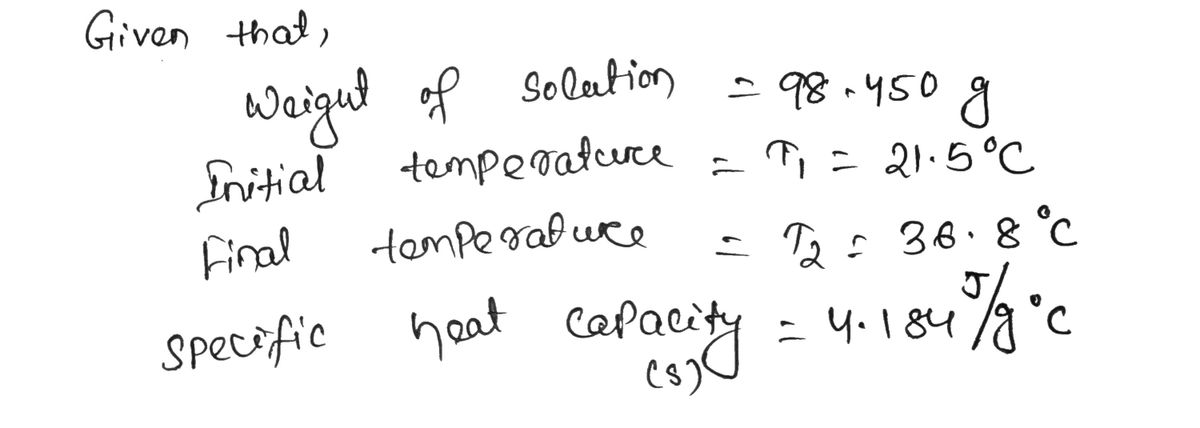is way ni vonstelanoo Enoon Teory of best upd elem 3D BOY, B mushonxo nevig givormi no uso mils over no con een moto como bas 6.302 vr sent (98.450) * (4.184) * (36-8-21.5) KJ vlasnos tramineux T 01 * The temperature of 98.450 g of an aqueous solution increases from 21.5 °C to 368 C. Calculate the change in heat content (9) of this solution Express your answer in units of Kilojoules. Assume the specific heat capacity of the solution is 4.184 J/gic Input your answer to three significant figures do not include units with your answer input. #1 to an Answer 6.30 KJ sit amet nidsive any tech 19wehs no bonisido avail blueda nox Miliv * calculate a value of 6.11 KJ 9 surroundings (also called you solution in this experiment). Calculate 9system (ako called greaction in this experiment). Do not include the units in your answer.
Thermochemistry
Thermochemistry can be considered as a branch of thermodynamics that deals with the connections between warmth, work, and various types of energy, formed because of different synthetic and actual cycles. Thermochemistry describes the energy changes that occur as a result of reactions or chemical changes in a substance.
Exergonic Reaction
The term exergonic is derived from the Greek word in which ‘ergon’ means work and exergonic means ‘work outside’. Exergonic reactions releases work energy. Exergonic reactions are different from exothermic reactions, the one that releases only heat energy during the course of the reaction. So, exothermic reaction is one type of exergonic reaction. Exergonic reaction releases work energy in different forms like heat, light or sound. For example, a glow stick releases light making that an exergonic reaction and not an exothermic reaction since no heat is released. Even endothermic reactions at very high temperature are exergonic.


Step by step
Solved in 3 steps with 3 images









